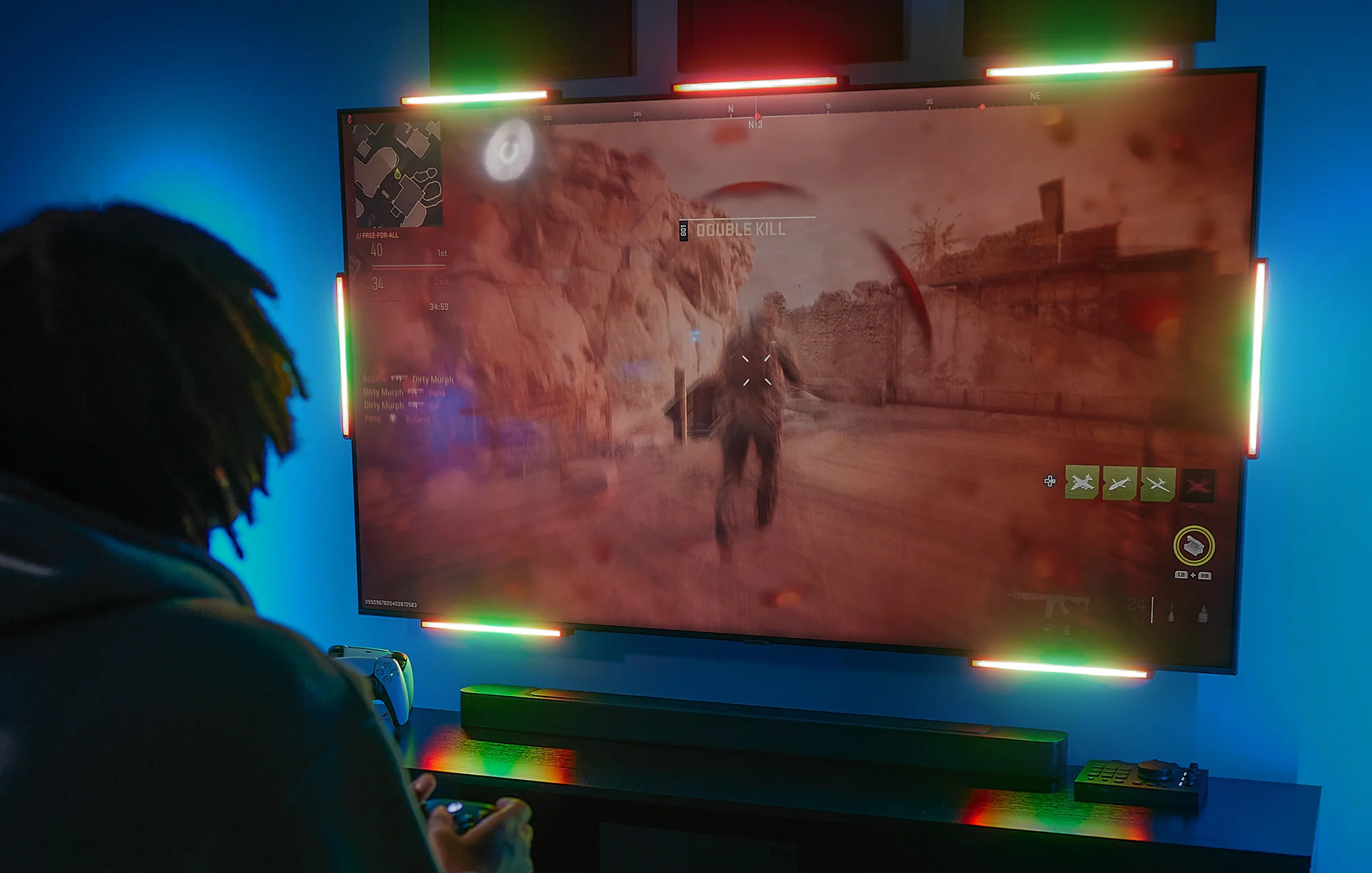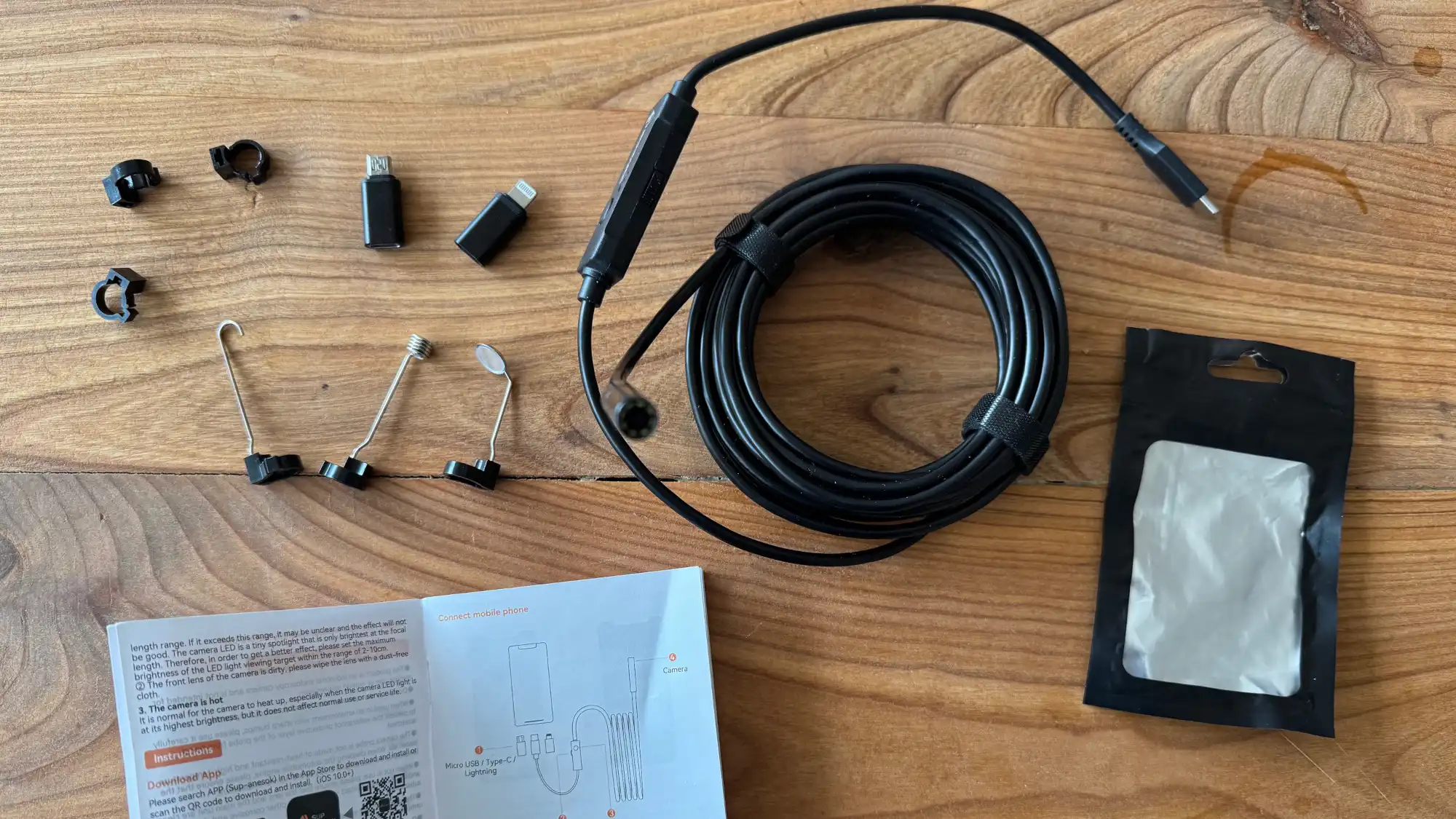Audio Radar translates 7.1 surround sound output into visual cues to help hearing impaired gamers compete.
“Hear everything with your eyes.” That’s the tagline for Audio Radar, an inspiring new gaming product that knocked my socks off at CES 2024. It helps hearing impaired gamers compete in games where sound location is crucial, such as Call of Duty and PUBG.
Created by a company called AirDrop, Audio Radar is a plug-and-play hardware system that works with consoles and the PC alike. It consists of six customizable RGBW lightbars that connect all around your monitor or television, then tie into a central “command center” laden with buttons. By connecting your PC or console’s HDMI output into the command center, and then routing another HDMI cord from the command center to your display, Audio Radar taps into the output 7.1 surround sound signal and uses it to light up the appropriate bars whenever a sound is detected in that direction.
By default, green lights indicate far-away sounds, while yellow and red lights let you know when actions happen closer. With two bars at the top of the display, two on the bottom, and one each on each side, they flare up individually as necessary to let hearing impaired gamers know where things are going down offscreen. (Both the left-side and top-left lightbars will light up when it hears something at a 45-degree angle from the player, for instance.)
The helpfulness of this can’t be stressed enough. Situational audio awareness is critical in games, and especially in esports games like Call of Duty, PUBG, or Counter-Strike. If an enemy hears you coming from the left, they can easily get the drop on you. That competitive advantage hurts hearing impaired gamers, but Audio Radar helps even the playing field.
The sturdy, seemingly well-made command center includes a variety of options that let you fine-tune the specifics of how the system works. Not only can you customize the colors used for directional indicators (helpful for color-blind gamers), but you can also adjust the lightform patterns used when audio is detected, adjust the noise-detection sensitivity of the front/side/rear bars (to keep it from going off constantly in smaller, tighter maps), save chosen presets, and more. It also features a “selfie mode” that shines all the bars in a bright white, or you can choose to set the lightbars to stay active in a dimmed mode for a Phillips Hue-esque mood when you aren’t actively gaming.
Since Audio Radar simply taps into existing 7.1 surround output via HDMI, it should work out of the box with virtually all modern systems and games, no additional software or tinkering required. Rad.
AirDrop CEO Tim Murphy hopes this is just the beginning, however. At CES, he showed me a new mod available for Minecraft that lets you color-code the lightbar output for hostile and neutral mobs; sheep and cows appeared green on Audio Radar’s lightbars, while a wandering Ender Dragon appeared in purple, so you can tell at a glance whether you need to be worried about a given sound indicator. Eventually, he hopes to work with game engines and studios to integrate Audio Radar’s technology so similarly tuned visual indicators would work with more games.
Even as it stands today, however, Audio Radar could be a massive quality of life boost for hearing impaired gamers, or for full-hearing gamers who like to play with the sound low or simply want a visual indicator of where sounds are coming from for increased situation awareness. I could see sweaty esports competitors or people that game after the rest of their household goes to bed loving something like this.



